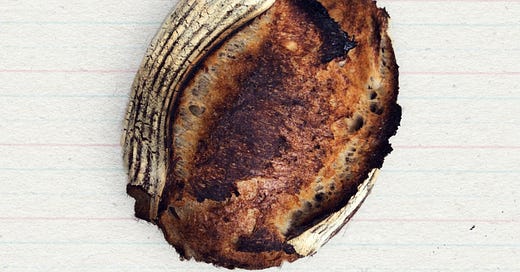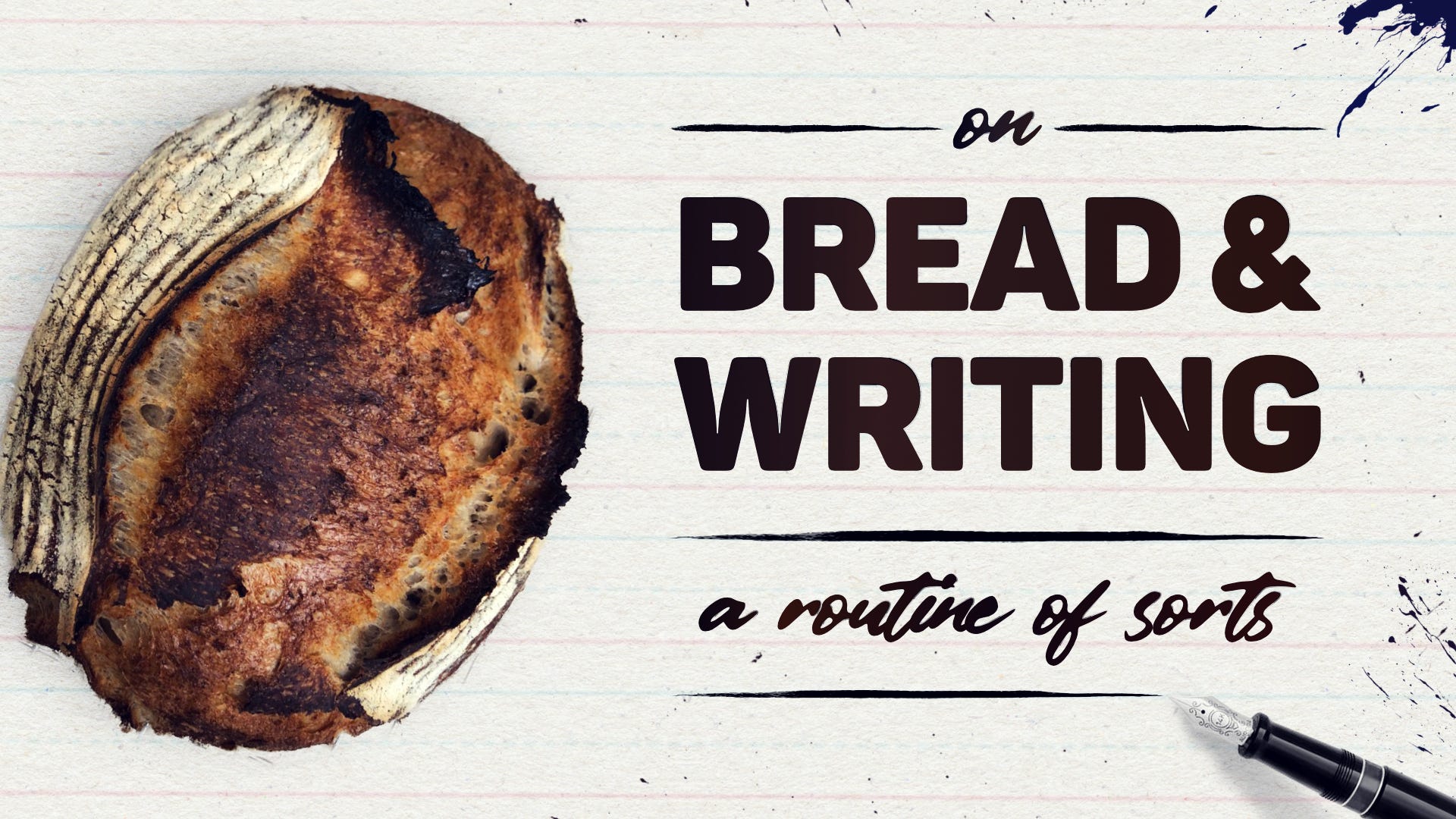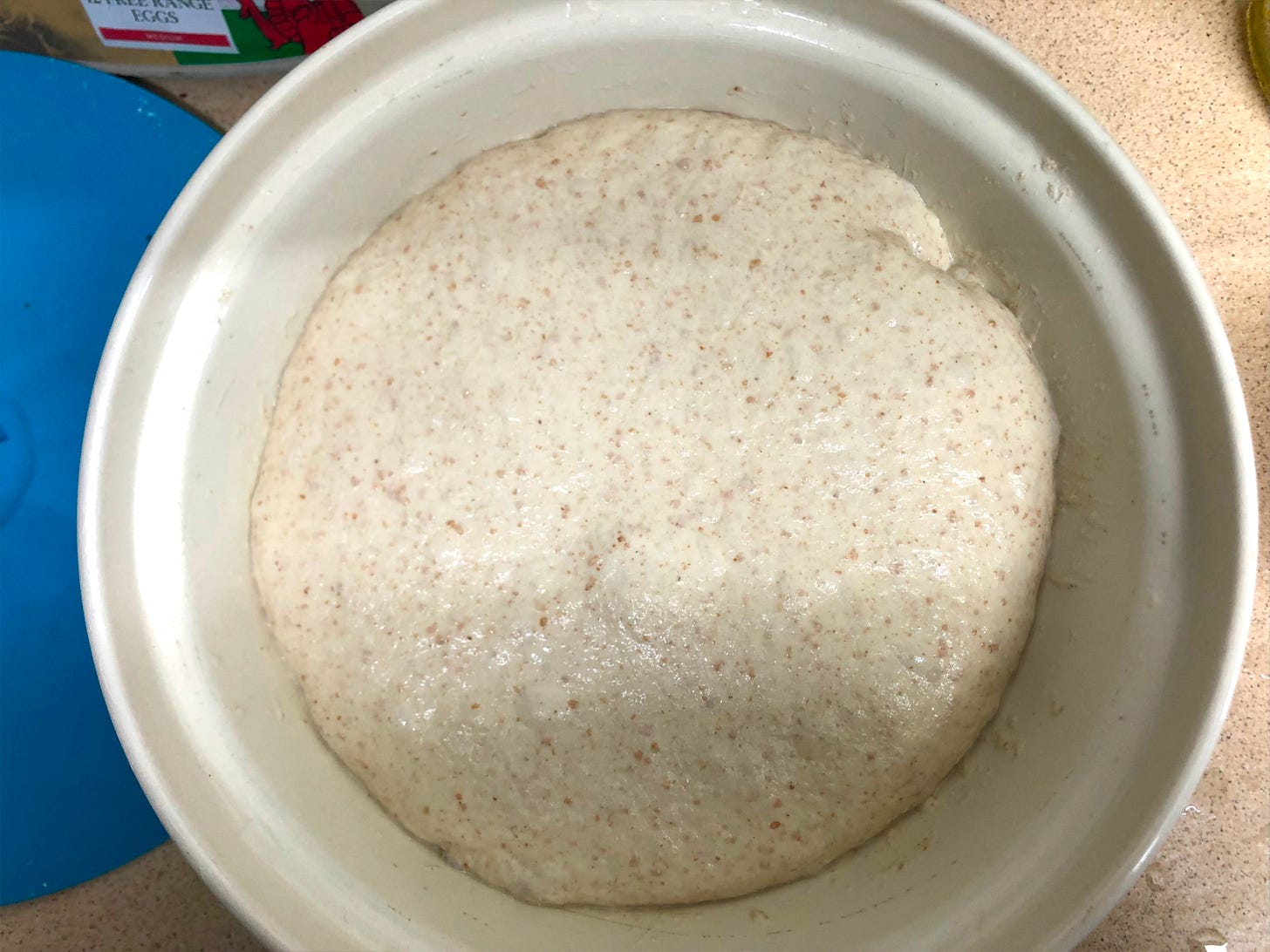Downstairs in my kitchen as I write this, a bowl of exceedingly wet bread dough is coming to life. The bowl, a big white Mason Cash, was a kind gift from colleagues for my thirtieth and has since birthed countless loaves, both sourdough and yeasted, as well as rolls, flatbreads, pizzas and bagels.
Today’s dough will either end up as focaccia topped with halved cherry tomatoes, lashings of olive oil and punchy herbs or a sheet pan pizza coated with fresh tomato sauce, a blend of cheeses and whatever goodies the fridge holds. I’m still deciding which. But due to the high ratio of water to flour, I know a bread that is flatter and bubblier and chewier is on the cards.
I first deposited all the ingredients—flour, water, salt, yeast and olive oil—into the bowl and mixed them into a still-yet unmanageable slop with a Danish whisk, a wonderful little tool that makes this a two-minute job and saves my hands from getting sticky1.
This dough is also novel in that it contains fresh yeast. Getting hold of some requires searching beyond shop shelves—either ordering online from a specialist or talking to someone in the bakery section of a supermarket, who will often break off a nice chunk for you gratis. Fresh yeast looks like a block of crumbly beige Play-Doh but smells far nicer, headier2, and I swear—though this could be a level of fey romanticism—produces tastier baked goods than the dried variety that comes in pre-portioned foil sachets.
There’s something seemingly illicit about collecting an unmarked baggy of this substance to take home and cook up into food that might soon send you into blissful sleep if you eat too much in one go. A gluten high, if you will. Sublime.
I keep a timer next to me while I write. Every hour or so I head downstairs to check on the dough, give it a few quick folds to help build its strength, before returning to my desk to write some more. It takes no more than a minute—longer only if I also brew coffee. Typically, for most bread I make, these brief intermissions are between one and two hours apart. But I tend to leave my desk when convenient. If, say, I’ve finished a paragraph I’m happy with or have reached a minor impasse, which might clear up after stepping away from the desk for a moment.
This main proofing stage3, whether for sourdough or long-yeasted bread, is around six hours.
Sourdough is typically a three-day event. First comes feeding the starter (a mixture of rye flour and water, in my case) the night before. Then, day two is for making the dough, which requires those occasional folds over six or so hours before shaping the loaf and placing it overnight in the fridge to bake the following morning (day three).
This may all sound like an ordeal, and in a sense it is, but it quickly becomes habitual and provides for me these perfect mini interludes to a day’s writing. I find I get more out of myself by allowing my mind to switch between whatever I’m working on and performing simple dough maintenance. Doing this, I somehow forget entirely to look at social media, which could lead me into a deep warren of wasted discovery.
Even on days like today when I make yeasted bread, which can be taken from mixed to fully baked in around three and a half hours, I tend to lower the normal amount of yeast, so the times become comparable with sourdough. The process can even be extended further and, in turn, improve a bread’s flavour by employing pre-fermentation methods such as a French poolish or Italian biga4. As with the sourdough, this can also be put in the fridge overnight prior to baking.
I think that’s partly the joy. Experimenting. That and making the process flexible for you (rather than you it). While there are certain breads I make again and again, trying different recipes and techniques keeps things fresh. There’s also something to be said about eating bread with fewer ingredients. Bread only requires flour, water, salt and yeast5, but the store-bought stuff is seldom so pure. Some of it can hardly be called bread at all.
I’ve never used the popular Pomodoro technique (nor any productivity systems for that matter), but I suppose this is quite similar. Except, unlike the Pomodoro technique, not only will I have hopefully written some semi-readable sentences, but at the end of the day, I will have something delicious to tear into—the spoils of a good day’s work.
My timer has just gone off and I, through writing this, have decided pizza to be the destiny for this dough. There’s mozzarella that needs using, plus a few pizza slices will see us for dinner this evening and our lunchboxes tomorrow.
I liberally oil a large sheet pan, pour in the dough, and gently coerce it into shape. The more you bother the dough, the tenser and more stubborn it gets, so it’s often best to give it time to relax rather than trying to force it into a perfect rectangle. Another twenty minutes or so will do.
Because we’ll want to eat the pizza hot from the oven, I’ll actually stick it in the fridge at this point to forestall further rising and will remove it again an hour or so before dinnertime, where I’ll layer the bare dough with sauce, cheese and various other toppings and pre-heat the oven to full-whack to help it blister and char slightly.
Yum!
Out of the oven.
I’ve been making bread on and off for years. My first loaves were all hand-kneaded, fast-risen and required much more attention. Nowadays due to the slower, more laid-back approach outlined above, it’s become a weekly, if not twice-weekly, practice.
Of course, I don’t make a loaf every single day I write, but I tend now to favour breadmaking on days I do.
Every last crumb
Real bread has a life cycle. There’s nothing better than wolfing down slices of a just-cooled boule slathered with salted butter and good jam. In the first few days, there are sandwiches and toast topped with mushrooms or egg (or both). Inevitably, the loaf begins to stale, but this isn’t cause for despair. It instead opens the door to a wealth of new delights: French toast being a personal favourite; croutons for salads and soups; baked with cabbage, leek and cheese as a rustic panade; soaked in custard for a cosy pudding; or a thousand other uses as breadcrumbs.
Some recommendations
If you’ve ever wanted to give breadmaking a go, a great book to start your journey is Jack Sturgess’s Bread Every Day. In it, Jack shows you everything from making a simple sandwich loaf to brioche, ciabattas, baguettes and sourdough, and he also has some fab recipes for using the remains of your bread. Ken Forkish’s Flour Water Salt Yeast is another fantastic book whose recipes all produce a similar-looking artisanal loaf, but each uses different timings and methods to fit your schedule. Baking School - The Bread Ahead Cookbook by Matthew Jones, Justin Gellatly and Louise Gellatly is perhaps a little more advanced but includes many varied bread recipes from around the globe and desserts worth whipping up for special occasions.
It’s usually at this first mixing stage that the dough is its stickiest. Over time as the gluten develops, it will want to cling to itself rather than your fingers.
If you’re into that sort of thing.
Otherwise called the first proof, first rise, or bulk fermentation.
Biga and poolish are both mixtures of flour, water, with a smidgen of yeast, usually prepared the night before and added to the remaining bread’s ingredients the next day. The main difference between the two is water: a poolish is wetter.
Yeast needs an asterisk because it isn’t strictly essential. Many flatbreads like tortillas do without. And for Irish soda bread, bicarbonate of soda is used as a rising agent, which is activated by buttermilk, yoghurt or beer.








Love this! Reminds me of the rustic Italian olive sourdough recipe I adapted from NYC restaurant Il Buco for easy home cooking!
check it out:
https://thesecretingredient.substack.com/p/get-il-bucos-recipe-rustic-italian